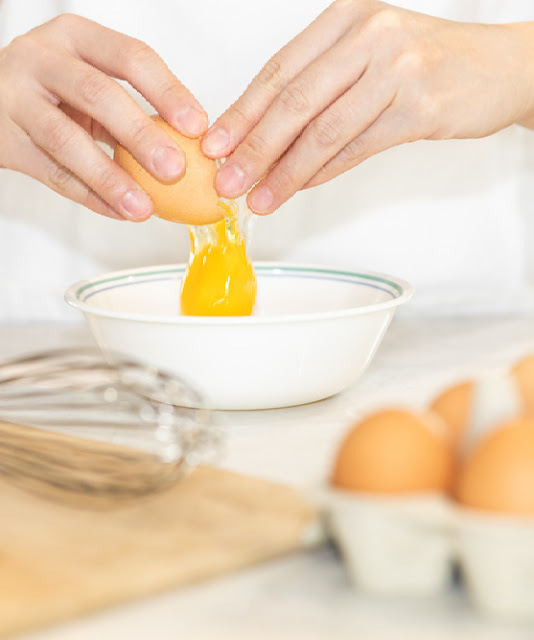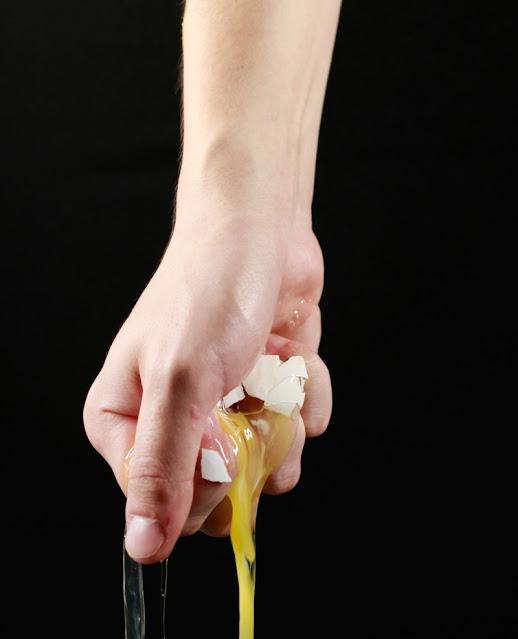If you raise chickens, you've most likely cracked way more eggs than the average person, and you probably don't think twice about it.
But you don't have to have a backyard full of poultry to use eggs on a regular basis, and anyone who bakes regularly likely cracks eggs all the time as well. Or anyone feeding a family.
Okay, pretty much everyone cracks lots of eggs over the course of a year, I would guess!
But regardless, I'm guessing that you grab an egg, give it a whack against the side of the bowl or pan and pry the halves apart.
But did you know that there's actually a right way and a wrong way to crack an egg?
What's the Best Way to Crack an Egg?
The mechanics of cracking an egg are simple. You have one goal: to break the eggshell in order to release the yolk and the white.
And then there are several secondary goals which include:
- not getting any bits of shell into the egg
- not breaking the yolk (if you're frying, poaching or separating the egg)
- not getting any bacteria on the outside of the shell into the insides of the egg
Again, this likely isn't something that you've thought too much about because it's such an everyday occurance, but there really is a best way to crack an egg.
So let's start with the wrong way to crack an egg.
The Wrong Way to Crack an Egg
If you are in the habit of giving the egg a hard tap against the rim of your bowl or pan, or against the sharp edge of your counter top, you might want to rethink that. Same thing if you regularly use a knife to crack eggs.
Yes, you'll even see some professional chefs and cooks and bakers on cooking shows cracking eggs by tapping them against the side of their bowl, but I have to admit that I cringe every time I see it. Every time. They should know better.
First of all, by using a sharp surface, you're pushing the pieces of eggshell right into the egg. Because you're breaking the membrane, the shell pieces don't have anything to stick to and will end up in the egg white - and therefore in your pan, batter or dough.
That's never a good thing and they're nearly impossible to get out.
This is especially bad if you find yourself having to hit the egg against the rim a couple of times. Not only will that lead to more small pieces of shell, there's bacteria on the outside of the shell to worry about.
The small pieces of shell can transfer any bacteria on the eggshell (even if you wash your eggs just before using themwash your eggs just before using them, trace amounts of bacteria can remain) into the egg white.
If you're using raw egg whites or not cooking the egg thoroughly, then you really want to avoid this.
When you use the edge of the bowl to crack your egg, egg ends up running down the side of the bowl. Just one more thing to clean! And if you use the side of your pan, the egg running down the side will burn or drip onto your stove, so even more to clean up.
And lastly, there's a chance that one of the sharp pieces of eggshell will pierce the yolk and break it. That will ruin your sunnyside up or poached eggs.
Note: If you do get pieces of eggshell into your bowl, use a clean piece of eggshell to fish them out. The risk of salmonella is about 1 in every 20,000 eggs, so you'll be pretty safe. But if you don't want to chance it, your fingers (easier if they're wet) or a spoon will also work - just not nearly as well.
The Right Way to Crack an Egg
Okay, so that's the wrong way to crack an egg. Now, for the right way.
Instead, hold the egg firmly and give it a solid thwack against a flat surface - the counter top or your cutting board - aiming roughly for the middle of the long side.
Halfway between the pointy end and the rounded or blunt end. This "equator" is the weakest point in the shell.
You want to give the egg a good whack so you only have to crack it once. If you end up having to tap it against the counter top a few times, you risk breaking the shell into those teeny, tiny, small pieces you were trying to avoid!
(But you don't want to hit it so hard that you crush the whole egg and the insides come squishing out.)
Once you've tapped the egg (firmly!) on the counter, gently press your thumbs into the crack and break the membrane. This membrane has worked to keep any broken pieces of shell intact and stuck to it instead of swimming around in the egg white.
Next, with your thumbs, carefully pull the two halves of the eggshell apart, holding the egg over a small bowl. Be sure to separate the shell halves wide enough apart so that the yolk doesn't catch on any sharp edges as you carefully let the egg slide out into the bowl.
It's always a good idea to use a separate, small bowl for this and not crack the egg over your bowl of batter or dough.
That way you can check that the egg is good and that there are no pieces of shell or other debris in the egg (such as a blood spot) before adding the egg to your pan or cake batter.
It's far easier to pick them out of a small bowl than your batter or a hot sizzling pan.
For all these reasons, cracking an egg on a flat surface is the best way.
Bonus: Advanced Way to Crack an Egg
Once you've mastered the flat surface crack, you can try a one-handed crack. More of a party trick or to impress your Instagram followers, the one-handed crack can take a bit of skill to master.
For this method, you'll want to hold your egg firmly with your thumb and pinky underneath the egg and the rest of your fingers on top.
Tap the egg in the middle as described above, then immediately pull apart the two shell halves using your thumb and pinky.
Warning: this method can be messy and is pretty much unnecessary unless you work as a short order cook at a fast food joint or diner!
So the next time you have to crack eggs, be sure to try cracking them on a flat surface. And enjoy my short video below about cracking eggs.



.jpg)








